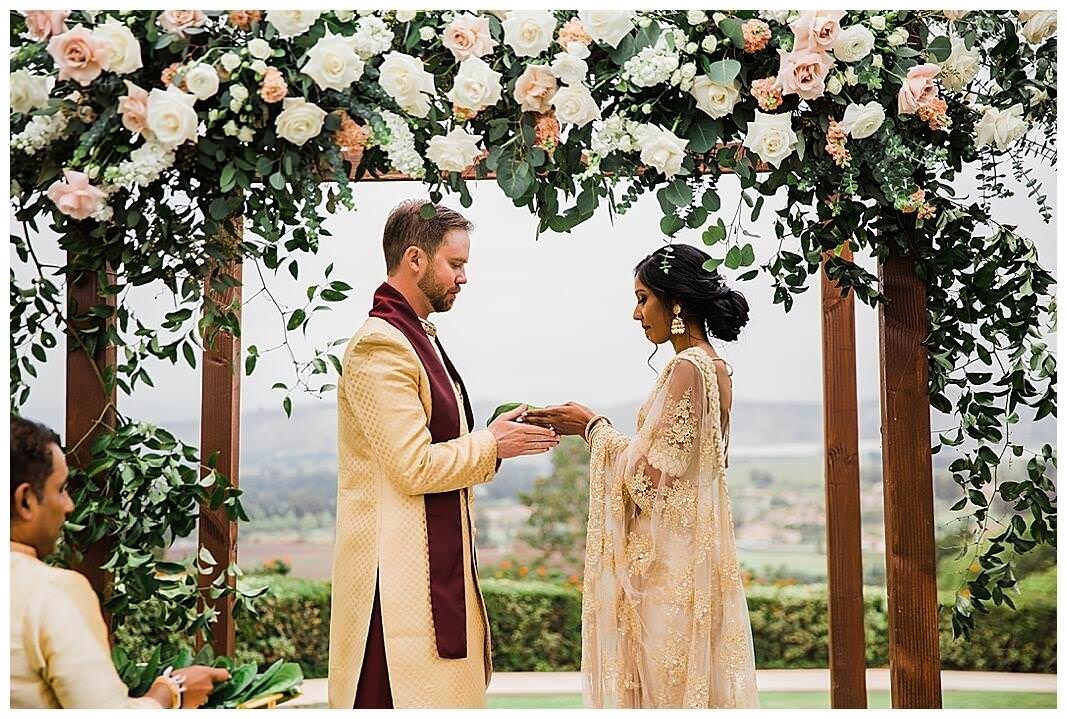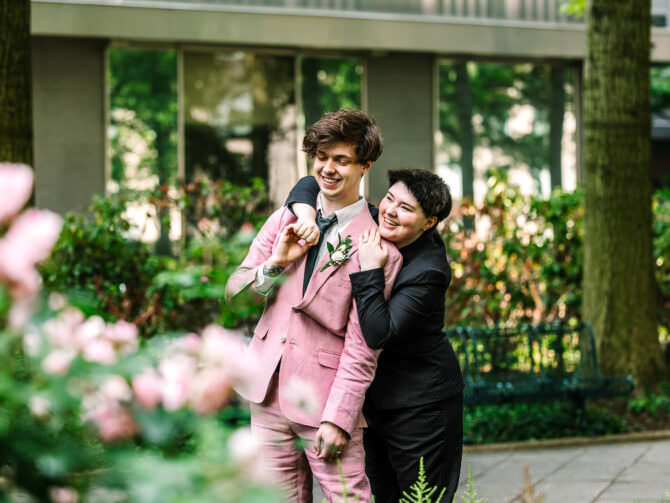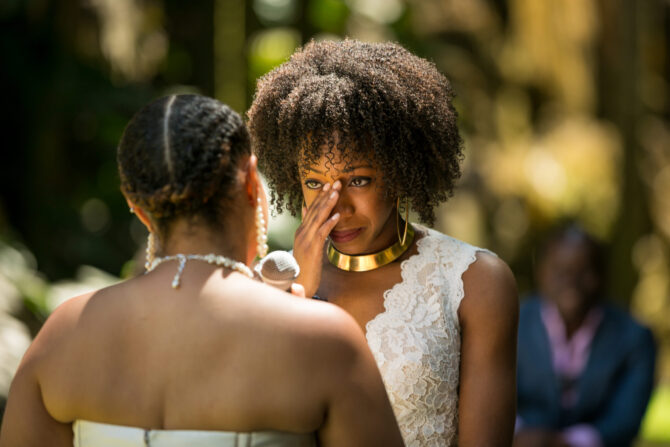Top strategies for crafting your dream wedding budget without breaking the bank.
It's probably not a shocker to learn that a wedding is a massive expense. What might be a bit of a shock is just how much of an expense it can genuinely be. According to statistics, the average wedding in 2023 cost $30,000 — a $2,000 increase over the past year — and a number that shows no signs of slowing down. (Though keep in mind that this number can differentiate, depending on where you live.)
Without outside assistance — and even with it — saving for weddings can be a massive expense. With costs increasing, your challenge is simple: Engage in comprehensive wedding planning that can create a solid wedding budget. Creating this kind of budget can control expenses, force you to think creatively about where you are spending money, and ensure you do everything you can to save for even more important life goals.
Determine your overall budget limit
Perhaps the most important question about your wedding budget is this: What's your overall limit? How much are you willing to spend?
The answer may initially seem obvious: “Well, I'll just spend $X.” However, creating this overall limit can be more challenging than you think. Before making your overall budget limit, ask yourself a few questions:
- Do you know how much the most basic costs – like food and a venue – will be?
- Do you know how much outside support you will get from family or friends?
- Do you know what type of wedding you want? Or what elements are you willing to compromise on?
These are serious questions that you have to be able to answer.
A good place to start would be to work with your partner and discuss your ideal wedding. You may have very different ideas on what you want to do and, in that case, this budget conversation can be even more instructive. It can lead you to have better communication about your goals for the wedding and ultimately force you to come to a place where you compromise on what you are looking for.
Once you have an idea of what you are each looking for, you can begin to discuss what are “must haves” and optional. From there, you can get a ballpark figure about what you want to spend.
That being said, there is absolutely a solid number that your budget simply will not be able to exceed. Your circumstances determine this number, ultimately guiding what you can and cannot afford. However, a budget is more than just a financial number, it is also a statement about your priorities. What matters more to you — having as many people as possible in a wedding venue or having the nicest possible wedding with fewer guests? Do you want the best possible food? A travel experience? A live band instead of a DJ? The best photographer in your city?
There is no right or wrong answer here: Just your answer. Your challenge will be to remember that when it comes to your wedding planning and wedding budget, you have to make sure that your plans are realistic and fit within whatever you can spend.
Prioritize essential elements like venue and catering
Once you have your hard financial limit, you can begin to have more extended conversations about what you absolutely need at your wedding and what you can potentially live without. Again, every couple has different priorities regarding where they want to spend most of their wedding. However, some items are essentially required at every wedding. These include:
The Ceremony
Every wedding needs … well, a wedding. Even if you do a private ceremony, at a minimum, you will have to pay any fees associated with your wedding license. Keep in mind that different states and countries may require certain documentation, like a government ID or birth certificate.
The Venue
So, where are you doing the wedding? In many cases, venues will also be able to help you identify other vendors, like DJs or Bands, that can add to your special day. In this sense, venues often offer “wedding planning light” services, and their relationships can absolutely help you reduce costs in other areas.
More often than not venue is going to be the single largest cost you have when it comes to your wedding (unless you opt for a backyard wedding!). As such, this is an area that you want to take your time and plan right. This wedding planning discussion leads to a central question: What is most important for you? Do you want a fancy catering hall with gorgeous decor that will look great in pictures? Or is there a local park that you can potentially use to help you save money? How will your guests get from the service to the reception, or will they all be in one spot? What costs are associated with that transportation?
Food and Beverage
Traditional weddings have a cocktail hour with appetizers, followed by the reception's main course, which can be buffet-style or served. Most weddings are open bars, but that really depends on you and your guests. Of course, you can't forget dessert.
Work with your vendors to discuss ways to save money. For example, buffets are often cheaper than a served dinner and usually offer guests more options. Instead of a traditional wedding cake, can you grab fancy cupcakes from a local bakery?
These three items are virtual requirements for every wedding. From there, you can move from “must haves” into categories with wider ranges of flexibility. As you'll quickly note, all of these categories tend to come with greater options in terms of where you can either skip them entirely OR find less expensive ways to manage. These include:
Photography and Video
Here’s the snapshot: on average, couples usually earmark around 10-12% of their total wedding budget for capturing their day in pixels and film. The key to balancing budget and quality is to research and prioritize. Consider what matters most to you: Is it having a cinematic video that rivals Hollywood productions, or is it more about candid, authentic snapshots that capture the essence of your day? Maybe you can choose a package that offers both photography and videography services to stretch your dollar without compromising on those magical moments being captured. (Tip: browse Love Inc.'s vendor directory, the Love List, to find equality-minded® wedding photographers!)
After all, when you’re flipping through your album or reliving your day through video, you’ll want to be reminded of the joy and love, not the cost. So, choose wisely and invest in memories that will bring you joy for years to come.
Floral Design
Navigating the floral budget is a bit like trying to arrange a beautiful bouquet without pricking your finger—doable, but it requires some finesse! Flowers have this magical way of transforming spaces, making them feel romantic, whimsical, or even downright regal. But here’s the petal to the metal truth: those blooms can take a big sniff out of your budget if you’re not careful. On average, couples earmark about 8-10% of their total wedding budget for flowers, covering everything from the personals like bouquets and boutonnieres to table centerpieces. The key is to communicate openly with your florist about your vision and your budget. Maybe peonies are your dream, but if they’re out of season, you might consider roses or dahlias for a similar vibe without the premium price tag. Remember, creativity in flower choices and arrangements can stretch your dollar without compromising on the splendor.
Stationery
From save-the-dates to thank-you cards, this paper trail is your first chance to wow your guests and hint at the festivities to come. But let's not sugarcoat it; those pretty papers can quickly add up to a not-so-pretty sum. Typically, couples allocate about 3-5% of their total wedding budget to stationery. The trick is to blend style with savvy. Opting for digital RSVPs over traditional reply cards, for instance, can save both trees and treasures. And while letterpress and foil stamping are the crème de la crème of elegance, there are countless beautiful designs available that won’t require you to sell your firstborn. It’s all about prioritizing what’s truly important to you.
Research average costs in your area
As noted above, the average wedding now costs $30,000. That being said, this average hides a ton of variation. The truth is that wedding costs will vary wildly depending on where in the country you live. After all, $5,000 will barely take you anywhere in a high-expense place like New York or California, but it may take you pretty far in lower-cost regions like the South or Midwest..
What does all of this mean? To get a better idea of how much your wedding will cost, you'll have to do your homework on average costs. This research will give you a better idea of when you are getting a great deal (and when you may be spending more than you need).
So, where can you track how much you should expect to pay? Fortunately, there are options. These include:
Vendor Directories
In general, plenty of national and regional databases will allow you to identify vendors. These vendors are often sorted by region, cost, and more. A solid vendor database should also have reviews, links to the vendors themselves, and additional information (such as if they are LGBTQ+ inclusive). For an example, check out our vendor directory.
Local Expos
Most regions will have regular wedding expos. These expos can be perfect for wedding planning and creating your wedding budget. In general, expos allow you to talk with vendors, better understand their services, and inquire about prices. Keep in mind that many of these vendors may not be able to give you an exact price at the expo. However, they should at least be able to give you a ballpark range of how much their services will cost and who you can contact for more information.
Even better: These expos often have samples of their work. In the case of dresses, food, or decor, this can give you a great idea of the quality you can expect from such a vendor.
Talk With Friends
Friends are often great sources of referrals for wedding vendors. You can also use your friends to get an idea of how much a specific service will cost, provided that you are comfortable asking your friends about how much these expenses are and that they are willing to tell you how much they paid!
Do the Legwork
Sometimes, there is just no alternative to emailing a vendor for a quote. Depending on the specific service, you may also need to give additional information about your wedding, like what you are looking for and how many guests you expect. As such, be prepared to answer specific questions when requesting a quote.
It is critical that you track these expenses on your own. A Google Doc or Excel Spreadsheet can help you keep track of what the costs of a vendor will be. This document can also allow you to easily share information with your partner and ensure they can make calls and input data.
Finally, remember that you must make as close to an “apples to apples” comparison as possible and read the fine print on any contract before signing. Different vendors may offer different items, resulting in fluctuating costs. As such, one vendor may appear much less expensive than another, but this may be due to a quality or quantity issue rather than just a pure price difference.
Allocate funds for unexpected expenses
No matter how perfectly you plan, every wedding has unexpected expenses that must be managed. So, what's your best bet? Set aside 10-15% of your overall expenses in a contingency fund. A buffer of this amount will allow you to manage any unexpected expenses and give you financial space to manage the inevitable unexpected expenses. Doing so ensures that you are prepared for any emergency and can have some financial wiggle room to manage those last-second expenses. Even better: If you do not tap this fund, you can use it on your honeymoon or to get something nice after your wedding!
Track and review your spending regularly
You need to track your expenses regularly to ensure that you are meeting your budget needs and can make adjustments accordingly.
Fortunately, doing so isn't tremendously difficult. In general, all you need is a Word or Excel document that lists your budget, how much you have allocated for each specific item, and how much you have spent already. This digital repository can ensure you don't lose track of any bills, know how much you spend for each item, and know what has been spent already. Furthermore, such a list can show you where you are spending more than expected and where you may have more wiggle room than anticipated.
It's also worth noting that there are plenty of ways to automate this process. Programs like Quicken can allow you to automatically set savings goals, attach files to specific expenditures, and create budgets that fit your needs.
The final takeaway
Your wedding is supposed to be the happiest day of your and your partner's life. It's the start of a new stage in your relationship and the next step of forever. Of course, it is also a major financial investment that requires time and legwork to get it right. Fortunately, by following these tips above — including appropriate planning, diligent research, and a combination of financial creativity and restraint — you can ensure that your wedding is an amazing event that doesn't break the bank.
Looking for more tips on wedding planning, like ideas from real weddings or a comprehensive vendor list across an array of categories? Check out Love Inc. for the latest in wedding planning for hetero and LGBTQ+ couples.
Written by Michael Schlossberg | Cover photo by Anoki Art Photography from Kasuni and Mike's Sri Lanken Fusion Wedding | Photo 1 by Maya Lovro Photography | Photo 2 by Todd Danforth Photography | Photo 3 by Kathryn Cooper Weddings















You must be logged in to post a comment.